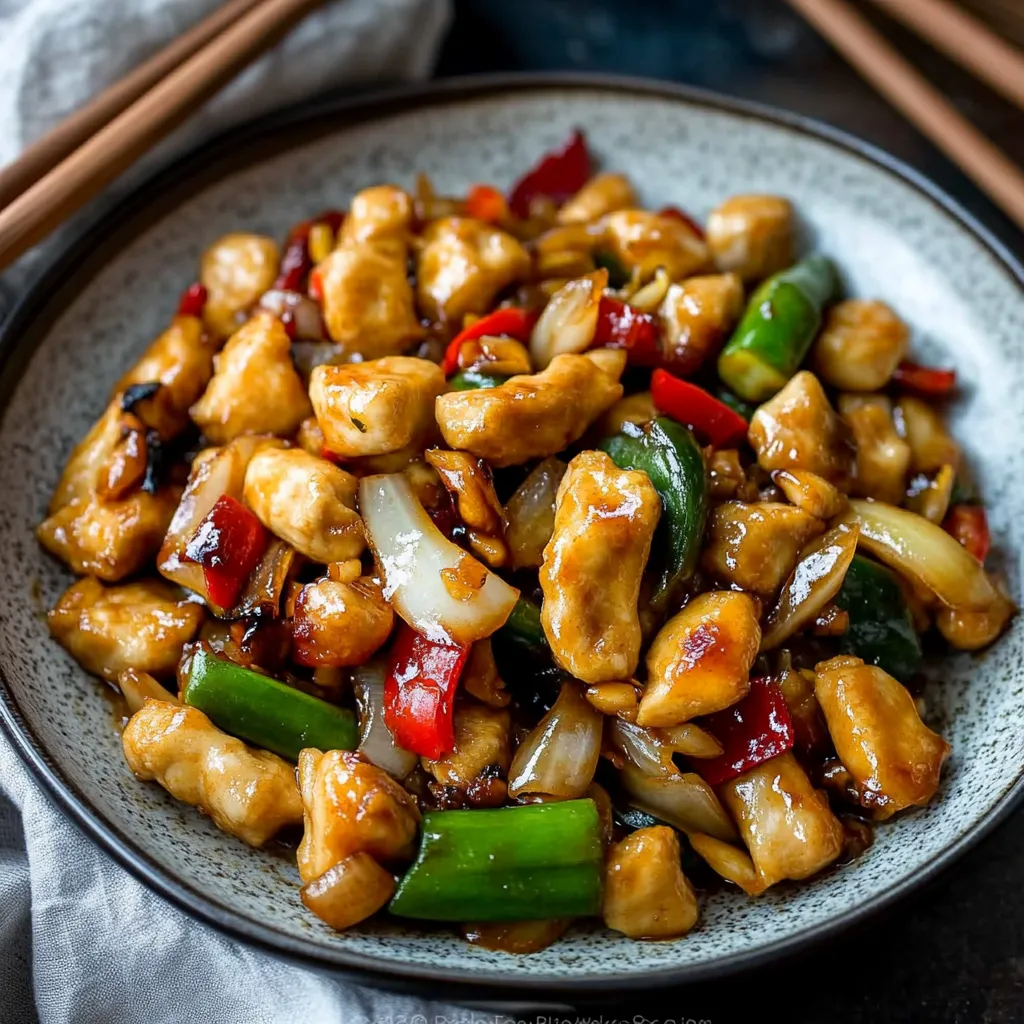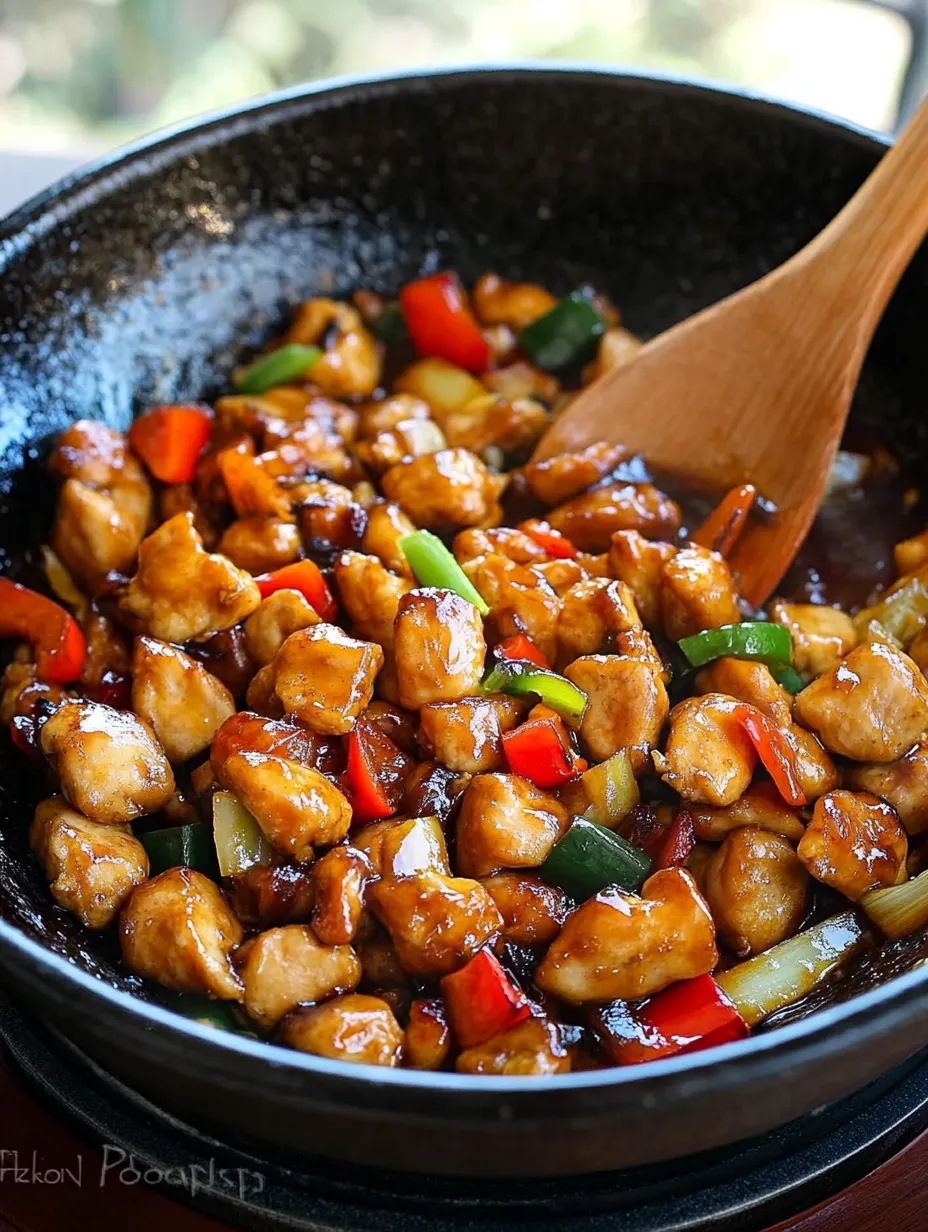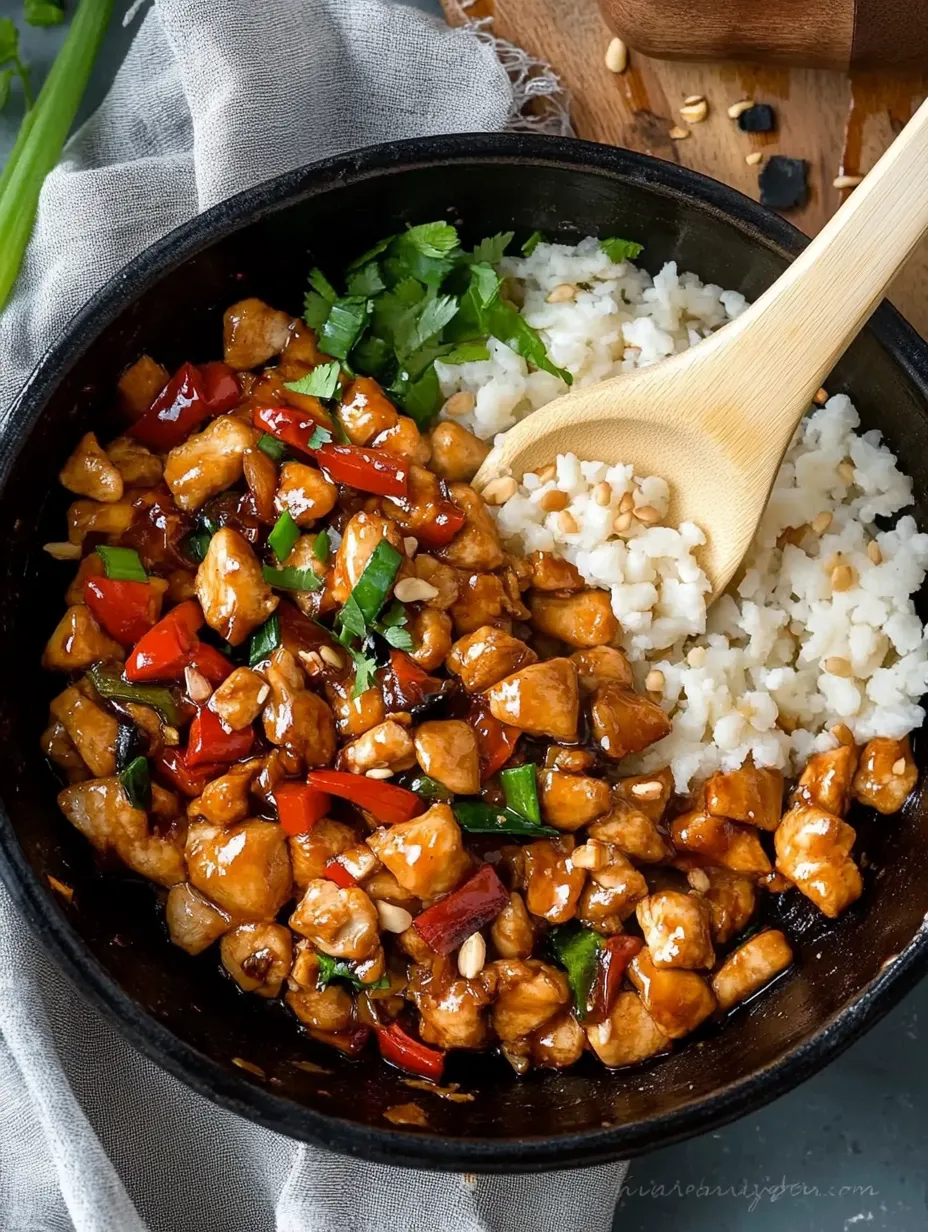 Pin it
Pin it
A proper Kung Pao Chicken should make your taste buds dance with its perfect balance of heat, sweet, and savory flavors. This homemade version captures the essence of the beloved Panda Express dish while letting you control every aspect of its preparation. Through countless attempts to perfect this recipe in my kitchen, I've discovered that the secret lies in the velveting technique - a Chinese cooking method that ensures incredibly tender chicken.
My family was skeptical when I first attempted to recreate this takeout favorite, but now they prefer this version. The key was finding the right balance of dried chilies - enough to create that signature flavor without overwhelming the dish.
Essential Ingredients and Selection Tips
- Chicken Thighs: Darker meat stays juicier in stir-fries. Cut pieces uniformly for even cooking
- Dried Chili Peppers: Look for whole Chinese dried red chilies. Remove seeds for less heat
- Soy Sauce (Light and Dark): Each type serves a different purpose. Don't substitute one for the other
- Chinese Shaoxing Wine: Adds authentic flavor. Dry sherry makes a good substitute
- Peanuts: Use unsalted, roasted peanuts. They'll absorb the sauce beautifully
- Fresh Ginger: Choose firm pieces with smooth skin for the best flavor
 Pin it
Pin it
Detailed Cooking Instructions
1. Perfect the Velveting
- Step 1:
- Whisk egg white until frothy before adding cornstarch
- Step 2:
- Coat chicken pieces evenly and let rest the full 20 minutes
- Step 3:
- This step creates that signature tender texture
2. Master the Stir-Fry
- Step 1:
- Heat wok or large skillet until very hot
- Step 2:
- Cook chicken in small batches to prevent crowding
- Step 3:
- Remove chicken when just cooked through
- Step 4:
- Keep pan hot between batches
3. Create the Sauce Magic
- Step 1:
- Combine sauce ingredients before starting to cook
- Step 2:
- Add to hot pan gradually to prevent lumps
- Step 3:
- Stir constantly until thickened and glossy
My first attempt at this recipe taught me the importance of mise en place - having everything ready before starting. Stir-frying moves too quickly to be measuring ingredients mid-cook.
Temperature Control
Maintaining proper heat throughout cooking is crucial. I've learned to listen to the sizzle - if it's too quiet, the pan needs to be hotter; too loud, and things might burn.
Sauce Science
The cornstarch in the sauce needs to reach a certain temperature to activate its thickening properties. I watch for the sauce to turn from cloudy to glossy - that's when I know it's ready.
Vegetable Variations
While bell peppers and onions are traditional, I often add zucchini or snap peas when they're in season. The sauce works beautifully with any crisp vegetable.
Serving Strategy
I serve this family-style, with extra crushed peanuts and sliced green onions on the side. This lets everyone customize their plate.
 Pin it
Pin it
Final Thoughts: This Kung Pao Chicken recipe represents what I love most about home cooking - the ability to recreate restaurant favorites while controlling quality and adjusting flavors to your taste. Each time I make it, I'm reminded that great Chinese cooking is about balance - of flavors, textures, and heat. Whether you're a spice lover or prefer it mild, this versatile dish adapts to your preferences while maintaining its authentic character.
Frequently Asked Questions
- → Can I adjust the spiciness level?
- Yes, you can reduce or increase the dried chilies and red pepper flakes to suit your taste. Remove the seeds for less heat.
- → What can I substitute for Shaoxing wine?
- Dry sherry is the best substitute. You can also use dry white wine or chicken broth as non-alcoholic alternatives.
- → Do I really need to marinate the chicken?
- Yes, the egg white and cornstarch marinade (called velveting) is key for achieving that tender, restaurant-style chicken texture.
- → Can I make this ahead of time?
- While best served fresh, you can prep all ingredients ahead. The dish reheats well but the vegetables won't be as crisp.
- → What vegetables can I substitute?
- Feel free to use any stir-fry friendly vegetables like broccoli, snap peas, or carrots. Just keep the pieces similar in size.
